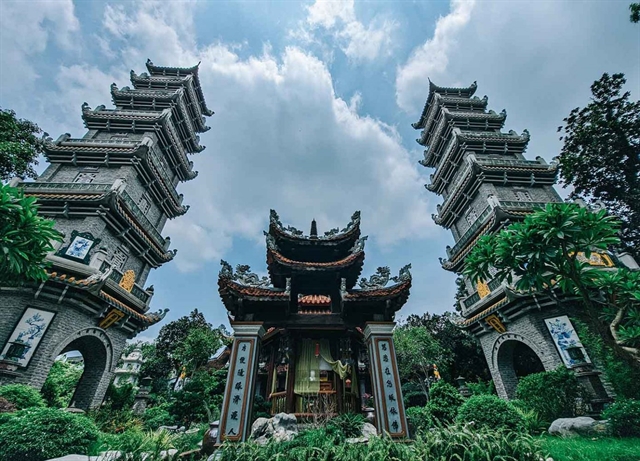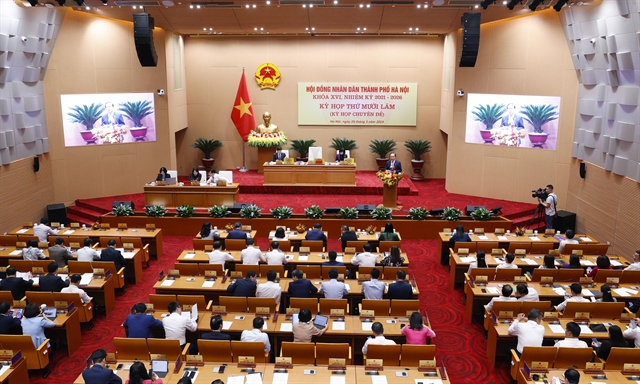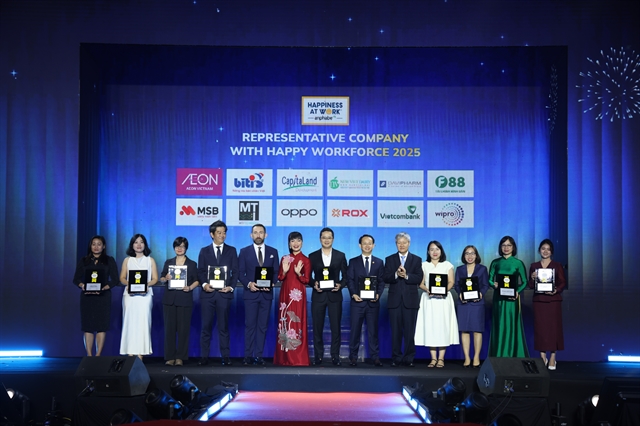 Sunday/Weekend
Sunday/Weekend

.jpg) |
| Hà Nội skyline across Red River and Vĩnh Tuy Bridge. By 2050, Hà Nội aims to achieve comprehensive economic, cultural and social development, leading to a high standard of living and quality of life. — VNA/VNS Photo Tuấn Anh |
HÀ NỘI — An ambitious plan for Hà Nội to become a major 'smart city' of culture, innovation and technology is one step closer after the capital's People's Council green-lit a significant development resolution.
Hà Nội will become a beacon of "culture, civilization, modernity," characterised by its green, smart, and culturally rich environment.
The plan wants to position the capital city as a leader in research, innovation, and technology transfer, driving the development of the Red River Delta region and the northern dynamic area. The city seeks to emerge as a major economic and financial centre, embracing green and circular development, digital economy and sharing economy models. It aims to excel in high-quality education and training, positioning itself regionally and globally.
By 2050, Hà Nội aims to achieve comprehensive economic, cultural and social development, leading to a high standard of living and quality of life. It aspires to achieve a development level on par with developed countries globally, fostering connectivity, sustainability, peace, and prosperity. The city also aims to be an attractive destination for visitors, residents and contributors.
Population projections indicate a significant increase, with an estimated permanent population size of 13 - 13.5 million people by 2050, accompanied by substantial economic growth and urbanisation. The spatial development structure of Hà Nội is delineated into various zones and corridors, reflecting its strategic position as a growth pole in Việt Nam and a key player in regional development initiatives.
Aligned with Hồ Chí Minh City, Hà Nội assumes a pivotal role in driving national growth and development, particularly in the dynamic triangle of the Red River Delta region and the quadrangle of northern regional development. This strategic positioning underscores the city's importance as a focal point for economic, social and cultural advancement.
It underscores several key tasks and breakthroughs for development, with a strong emphasis on environmental protection and urban revitalisation. It prioritises addressing pollution in rivers. Efforts are directed towards ensuring safe irrigation water for agriculture while enhancing green spaces for urban development.
Renovation of old apartment buildings and the elimination of unplanned, unsafe self-built houses are highlighted to improve living conditions and safety standards. Preservation and enhancement of the ancient quarter and areas with French architectural styles are prioritised to harness the cultural and historical value of Hà Nội as a thousand-year-old capital. The utilisation of underground space in transportation and urban service development is also emphasised to optimise land use and infrastructure efficiency.
The plan delineates five economic-social regions in Hà Nội. It also identifies five distinct urban areas, each with its unique characteristics and development focus. These delineations provide a framework for strategic development initiatives tailored to the specific needs and opportunities of each region and urban area within Hà Nội.
 |
| Scenes of the meeting in Hà Nội on Thursday. — VNA/VNS Photo Văn Điệp |
Planning horizon must not be ignored
Delegate Nguyễn Tiến Minh, representing Thường Tín District, expressed strong support and consensus for the Capital Region's planning.
Minh advocated for a focus on transportation planning commensurate with the city's projected population of 100 million. He suggested positioning the Red River as a central axis in the planning, implementing a grid-based road network, and effectively addressing wastewater management to rejuvenate historic waterways.
Delegate Nguyễn Minh Đức, representing Hoàng Mai District, recommended thoroughly evaluating approved plans and devising strategies to inherit and build upon the foundations laid out in the new planning framework.
Touching on transportation issues, especially urban rail, Đức believed that "if we want to solve transportation problems, developing urban railways is a key issue to address congestion in Hà Nội's traffic."
He also emphasised that, after enacting the Capital Law (amended), the city needs special mechanisms for capital and capital mobilisation to develop urban railways; investment of resources and organisational implementation also need attention to avoid delays.
"In the context where many cities worldwide have stopped licencing petrol-powered cars, should Hà Nội also have incentives for green transportation," suggested Đức.
Delegate Dương Hoài Nam from Long Biên District stressed the importance of the planning horizon as a guide for socioeconomic development. He suggested that Hà Nội should aim to achieve key planning objectives within six years, focusing on institutional improvements. Urgent issues such as transportation and environmental pollution should be addressed as priorities. — VNS




